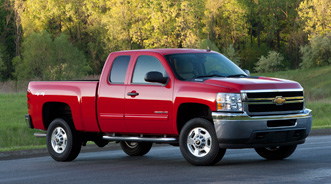Manheim Index Climbs for 4th Month in Row

New-vehicle inventories again had a direct impact on wholesale prices, according to Tom Webb’s analysis after sharing the latest Manheim Used Vehicle Value Index reading.
Manheim indicated wholesale used-vehicle prices (on a mix-, mileage-, and seasonally adjusted basis) rose for the fourth consecutive month in September, pushing the index to 122.8, which represents an increase of 1.7 percent from its year-ago level.
“Dealers entered September with low new-vehicle inventory levels overall and shortages for some key models,” Webb said. “Statistically speaking, one of the most important determinants of late-model used-vehicle pricing is the amount of new-vehicle inventory sitting on dealership lots.
“As such, September’s rise in wholesale pricing was no surprise,” he continued. “In coming months, however, we expect new-vehicle inventory levels to build and wholesale supplies to rise on the back of higher off-lease volumes. That should put some downward pressure on used-vehicle values.
“In addition, year-over-year comps will become more difficult since used-vehicle values were boosted at the end of 2012 as a result of Hurricane Sandy,” Webb went on to say.
Prices within five of the six vehicle segments Manheim tracks as a part of its monthly index report moved higher in September. Leading the charge was the price gain posted by pickups, as Manheim pinpointed the year-over-year increase for these units at 7.4 percent.
“Over the past year, pickup trucks have significantly outperformed the overall market when it comes to used-vehicle valuations,” Webb said.
The other four segments that produced price gains in September included:
—Compact cars: up 1.9 percent
—Midsize cars: up 4.9 percent
—SUVs and CUVs: up 1.1 percent
—Vans: up 5.2 percent
Prices for luxury cars represented the only segment to soften last month as they dipped 1.4 percent year-over-year.
“Luxury cars have been under some price pressure since there has been a growing supply,” Webb said.
Rental Risk Prices at Auction Remain Strong
Manheim determined average prices for rental risk units sold at auction in September declined relative to August, but remained 1.9 percent higher year-over-year.
“Average mileage was down relative to both August and a year ago. As has been the case since March, volumes tracked very closely to their year-ago level,” Webb said.
During his quarterly conference call discussing the latest index and more, an analyst asked about the potential impact of a large rental company that reportedly is prepared to send a large volume of risk units down the lanes during the fourth quarter.
“It’s always a problem if you have a larger number than expected concentrated in a particular model or quarter. The fourth quarter is not a particularly strong period for the remarketing of rental risk units nor is it strong for the purpose of new units into the rental fleet,” Webb said.
“The auction industry can certainly handle the volume. The volume increases overall this year have been small, in the single digits,” he continued.
“The wholesale market is obviously very sensitive to the volume levels in a particular model. Once you hit some saturation point, the diminishing return for prices can be quite severe. It will go beyond that model,” he went on to say.
Webb shared an example to reinforce his point, recalling back about 10 years ago when a flood of Oldsmobiles went into the fleet market.
“As a matter of fact, it was all of their volume at one point. That certainly hit the residual values of other Oldsmobiles, but it also hurt Chevrolets and Fords and Toyotas. It spread its way out,” Webb said.
Nick Zulovich can be reached at nzulovich@autoremarketing.com. Continue the conversation with Auto Remarketing on both LinkedIn and Twitter.


